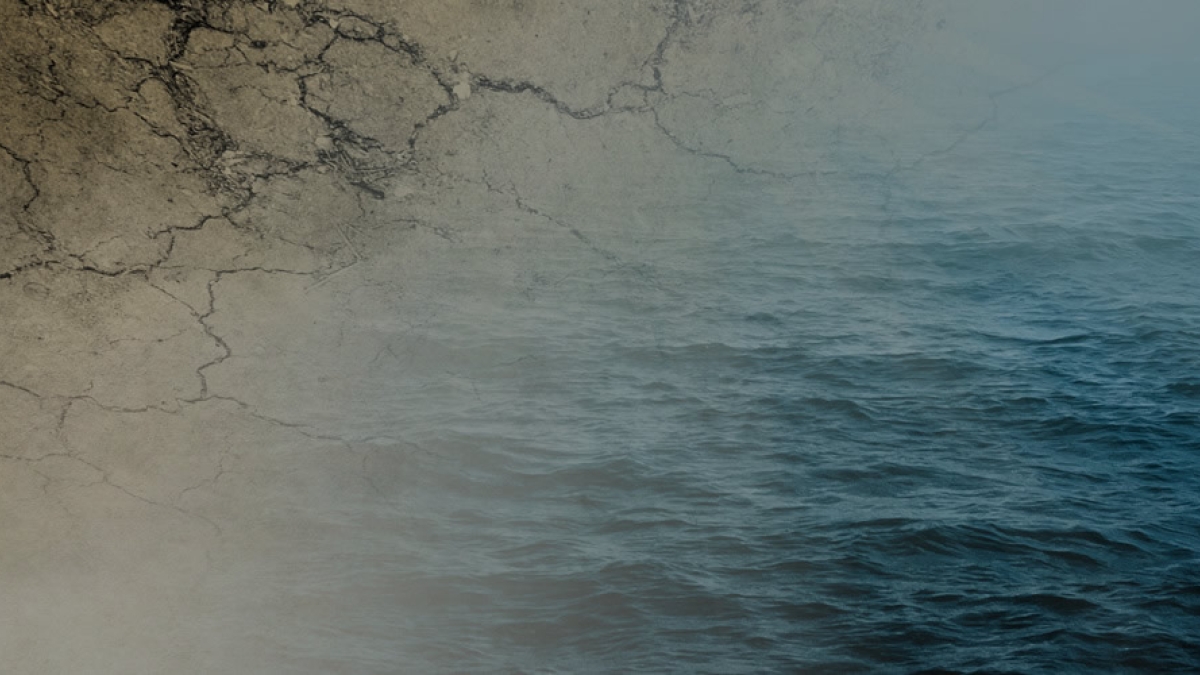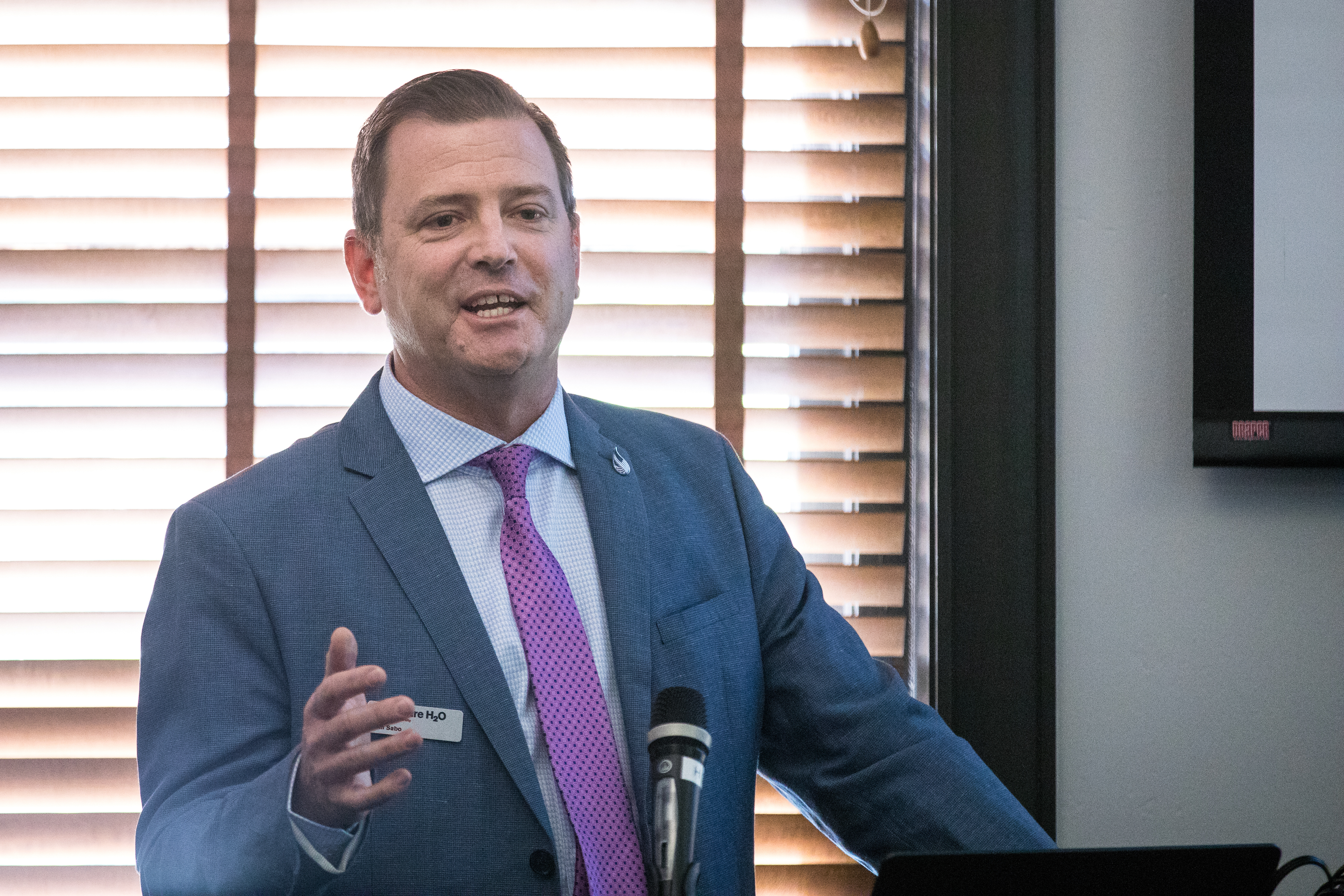Arizona State University’s water initiative announced a sweeping new strategic plan this week.
Spurning the typical narrative of scarcity, Future H2O will face a goal of abundant water for vibrant communities, economies and ecosystems.
“What we’re doing is building new partnerships,” director John SaboSabo is a professor in the School of Life Sciences, a senior sustainability scientist in the Julie Ann Wrigley Global Institute of Sustainability and affiliated faculty in the Center for Biodiversity Outcomes. said. “All of the proposals we make, we want to have a solution at the end of the pipeline.”
The initiative’s goals include becoming a hub for transdisciplinary water scholarship at ASU; creating a new research culture embracing all water issues; emerging as a national leader in externally funded solutions-oriented water research; expanding ASU’s engagement on water globally; engaging the private sector; improving access to and use of big data on water; and creating and promoting a water narrative focusing on positive change.
“There’s a lot of research out there that says we’re going to hell in a handbasket,” Sabo said.
Here Sabo talks about the current state of water research and where the new plan is headed.
Question: Where is water research at ASU falling short, and what does the new strategic plan do to address those gaps?
Answer: I think we’re doing excellent stuff, really top-notch research, but I think what happens is we don’t do the work we need to do to get science-informed policy out there. We need to have scientists in the trenches interacting. The reason why this doesn’t happen is because the incentives aren’t there, and that takes time. If you’re a faculty member, it’s time you’re not writing proposals or papers. If you engage with decision makers, these folks who need research but don’t know what you can provide, it makes us more competitive in a market that’s completely saturated. ... Some of those RFPs [requests for proposals] get 400 proposals — how do you stand out?
Ecologist and Professor John Sabo speaks at the ASU Water Summit and its update on the Future H2O program on Oct. 3 at the University Club in Tempe. The luncheon focused on interdisciplinary solutions to the local, regional, national and global water scarcity. Photo by Charlie Leight/ASU Now
Q: How does coming from a mind-set of water abundance (vs. water scarcity) change how you approach water research?
A: A lot of the conversation about water is how bad our institutions are, and how poorly matched they are for the future, where there’s more people. I think creating a narrative of abundance focuses on how we get there. ... In the '80s Gov. (Bruce) Babbitt passed the Groundwater Management Act. California didn’t have the same policy instituted. An abundance narrative keeps us from getting cozy with history and forces us to look more forward. What is the next GMA that will carry us forward?
Q: How would you characterize academic water research in the West right now? Is it geared toward doing more with less water?
A: To a certain extent. It depends on who you ask. There’s hydrology, engineering, law, ecology. A lot of the conservation in the West is about efficiency and in particular reuse. Reuse rather than efficiency is the low-hanging fruit. In Arizona we reuse the majority of our water. Historically it’s something we’ve done pretty well. We have to ask ourselves what’s working.
Q: There are five program areas in the plan. One is urban efficiency. Is this intended to send a signal to business that we’re going to have the water they’ll need to operate here?
A: I think we do need a narrative like that, but we have to be careful. We don’t have to save water just to use it the way it’s being used now. We have to look at the highest possible use for that water.
Our mission statement is "abundant water for vibrant communities, economies and ecosystems." We worded it that way for a reason. It’s not how we can add more people to Phoenix, but how can we grow our quality of life? That might be more jobs, better jobs. Or it might be putting water back in the system to get to the (Colorado River) delta, and that would be water for ecosystems. You have to have those three components.
More Environment and sustainability

ASU prof turns trash into treasure
The Research Corporation for Science Advancement, or RCSA, regularly hosts a series of discussions known as Scialog, a portmanteau of science and dialogue. Created in 2010, the Scialog format…

Best outdoor experiences are shared and build connections, recreation professor says
Steve Sassaman doesn’t really need to tell you he’s an outdoorsman. One look at his full, dark beard gives a vibe that clearly says he knows which end of the kayak to put into the water first.While…

ASU offers new project-based courses for global leaders of tomorrow
Addressing complex challenges requires innovative solutions.This is why the College of Global Futures — with its four academic units including the School for the Future of Innovation in Society, the…

